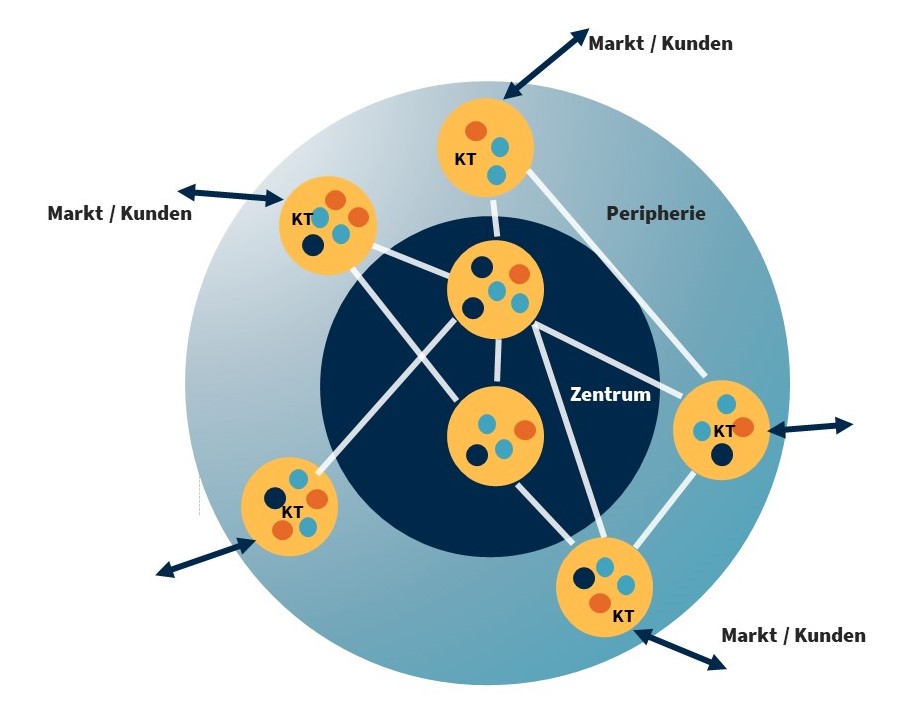More Agility and Client Focus
QSIT has grown rapidly over the past two years, as has the complexity of its processes. To remain agile in spite of its new size, the Ingolstadt QA specialist has launched a committed restructuring program to create a decentralized organization. At its heart are so-called competence teams, which are designed to ensure a consistent client focus and agility.
With this restructuring, QSIT is responding not only to its own growth, but also to developments within its clients’ markets, which are rapidly becoming more complex and more dynamic, while employee needs are changing. Many people are looking for greater flexibility in their work, more decision-making freedom and greater responsibility. Usually, companies respond to a more dynamic marketplace by expanding their administration apparatus and raising the standardization of their processes. The result is that they often spend more time working on internal matters than with their customers. This can lead to companies missing important trends and gambling with the motivation of their workforce, which can often feel hampered by the growing administrative workload. When the dynamic market sets the pace externally, it is often the periphery of the organization that has its finger on the pulse and is best placed to ensure customer satisfaction. This periphery needs bosses who trust their staff, enabling them to act independently, quickly and flexibly. Agility is therefore the motto for modern companies operating in a volatile market. QSIT CEO, Dr. Henry Guzmán, thus also sees agility as a key prerequisite for the long-term success of his company. That’s why he decided to restructure QSIT into a decentralized organization similar to a cell (see diagram).
Cell structure for more client focus
The most important aspect of the modern cell structure is that company management no longer sits at the top of a hierarchy pyramid – from where they hand down “commands” – but in the center of a cell. It is their job to make sure the periphery, i.e. the customer teams, are able to work at their best and with the greatest possible degree of autonomy. This ensures the company always has its finger on the pulse. QSIT began implementing a cell model at the start of the new year. First, existing client projects were shaped into competence teams, each immediately headed up by newly appointed Competence Team Leaders (CTL). These CTLs will ensure that the processes work in their respective team, that all team members have the best possible working conditions and that communication with the management team works well. The CTLs will also gradually take on tasks that were previously handled by management – such as aspects of HR or the strategic year plan for their team. Four experienced QSIT QA specialists, Alfonso Reitenspieß, Andrea Lubej, Mounir Bahtit and Nancy Irgang, have each taken on the role of Competence Team Leader.
“The aim of this change is not simply to flatten hierarchies, but rather to shift decisions and responsibility to the periphery – to our competence teams – where the direct contact with our clients takes place,” explains Dr. Henry Guzmán. “This concept clearly takes us into new territory, and we are learning more every day about what works and what doesn’t. But that is exactly what agility is – the ability to react flexibly every single day to rapidly changing situations. This is the only way we will be successful in the long term.”
To expand these competences within QSIT, Henry Guzmán also wants to push forward with the development of the “QSIT Academy”, the company’s in-house training program. All staff will have the opportunity of continual personal development in line with their individual needs in order to be armed to face the challenges of the agile world.


